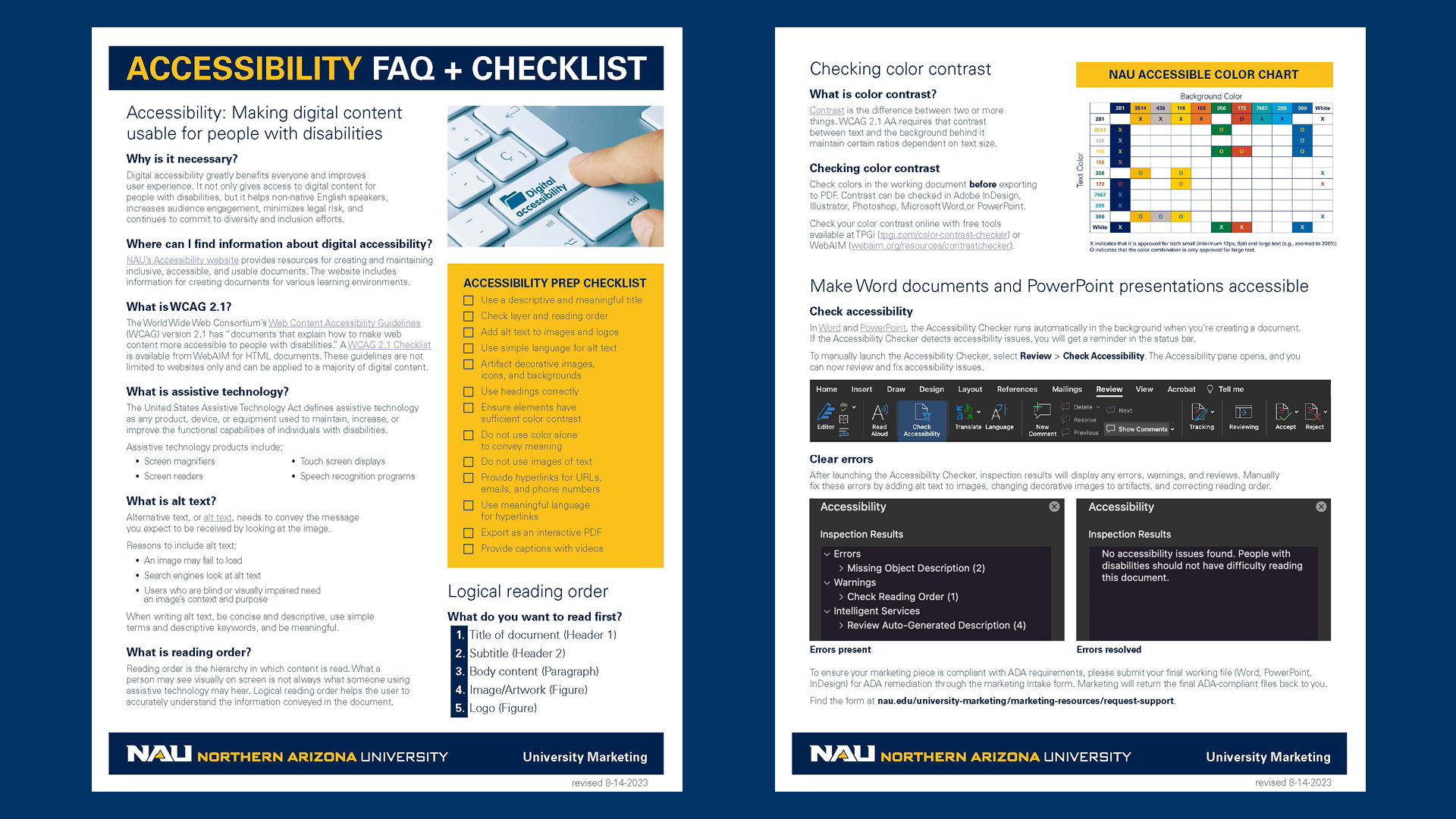Northern Arizona University Accessibility FAQ
by Charlese Bedford




title
Northern Arizona University Accessibility FAQ
agency
University Marketing
client
Northern Arizona University
Submission by
Charlese Bedford
Project Lead
Charlese Bedford / Marketing Accessibility Analyst
Contributors
Jane Muller, Manager, Graphic Design, University Marketing Lauren Copeland-Glenn, EO & Affirmative Action Analyst, Senior, Equity and Access Office Jamie Axelrod, Director, EO & Affirmative Action, Disability Resources
Description: Accessibility FAQ (Frequently Asked Questions) presentation/slide deck and Accessibility FAQ + Checklist digital flyer (PDF - print friendly) for university-wide sharing.
Purpose: To raise awareness of accessibility and educate university departments on ADA compliant, accessible digital document requirements for the web.
Goal: Require all digital documents, that are uploaded to the NAU website, to be ADA compliant.
Solution: Accessibility education, design and document remediation training, and marketing support.
Summary: Accessibility aligns with Northern Arizona University's (NAU) strategic plan: NAU 2025 - Elevating Excellence and continues the commitment to inclusion by fostering a culture of shared responsibility. The training presentation and FAQ flyer are tools for educating university students, staff, and faculty about accessibility, WCAG 2.1 guidelines, ADA federal law requirements, and correct digital document preparation for web distribution. By providing this information, the university has increased audience engagement and opened up new opportunities for significant, specialized employment. My contributions to ADA compliance and accessibility remediation have not only expanded my career, but has catapulted the university to continued excellence.

Charlese Bedford
NAU: University Marketing has made ADA standards, according to WCAG 2.1, a requirement for all digital documents posted on the university website. Many departments did not know or understand the challenging requirements of ADA compliant, accessible documents. This increased the need and desire to make all usable materials shared on the web and/or email accessible to all users. The significant outcome of our efforts to educate on this topic has brought university-wide awareness, understanding, and specialized support for students, staff, and faculty alike. Personally, in my career, I am excited to contribute my knowledge and educate fellow Arizona graphic designers/content writers/videographers on the importance of universal design and how developing a project with accessibility in mind from the start can identify issues sooner, as well as shortening revision/remediation turnaround times. Accessibility is part of design and development. For our organization, it is no longer an afterthought.